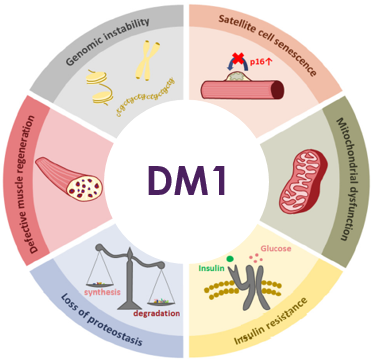DM1 and Aging: When Disease Accelerates the Clock
Myotonic Dystrophy Type 1 (DM1) is not just a muscle disease—it’s a complex, multisystem disorder that mimics and accelerates many of the natural effects of aging.
While most people experience gradual changes as they grow older, people living with DM1 often face these challenges earlier, more severely, and all at once.
Shared Features of DM1 and Aging
🧠 Cognitive Impairment
People with DM1 may struggle with memory, concentration, and executive function—much like early cognitive aging or dementia.
😴 Excessive Daytime Sleepiness & Fatigue
Common in both aging and DM1, but in DM1 it can appear decades earlier and be more severe.
💪 Muscle Weakness and Wasting
Similar to sarcopenia (age-related muscle loss), DM1 leads to decreased strength, mobility issues, and increased risk of falls.
❤️ Heart Rhythm Problems
Just like older adults are more prone to arrhythmias, so are those with DM1—but often starting in their 30s or 40s.
🧬 Immune and Metabolic Dysfunction
Individuals with DM1 may experience insulin resistance, hormonal imbalances, and other age-associated metabolic changes much earlier.
👁️ Early-Onset Cataracts
A hallmark symptom of DM1, these often appear in affected individuals in their 20s or 30s—decades before typical age-related cataracts.
🔬 Cellular Aging
Research shows that the toxic RNA buildup in DM1 may accelerate cellular damage and impair the body’s natural repair processes—effectively speeding up biological aging.
DM1 as a Proof-of-Concept Model
The overlap between DM1 pathology and aging biology positions DM1 as an accelerated model to test therapies targeting age-related mechanisms, with clear genetic cause and measurable molecular endpoints.
